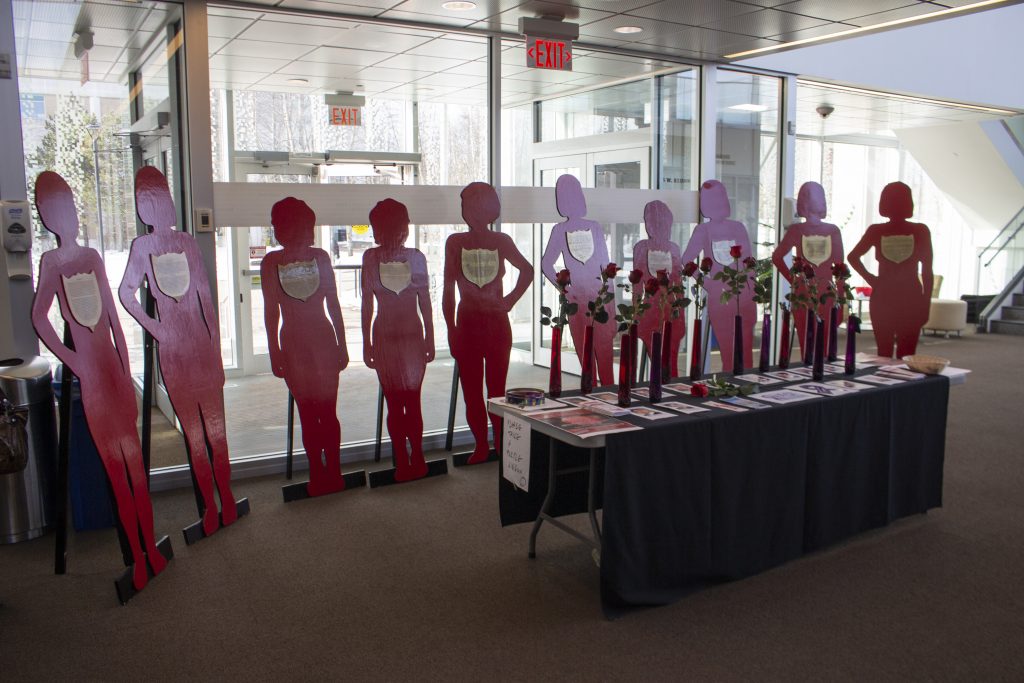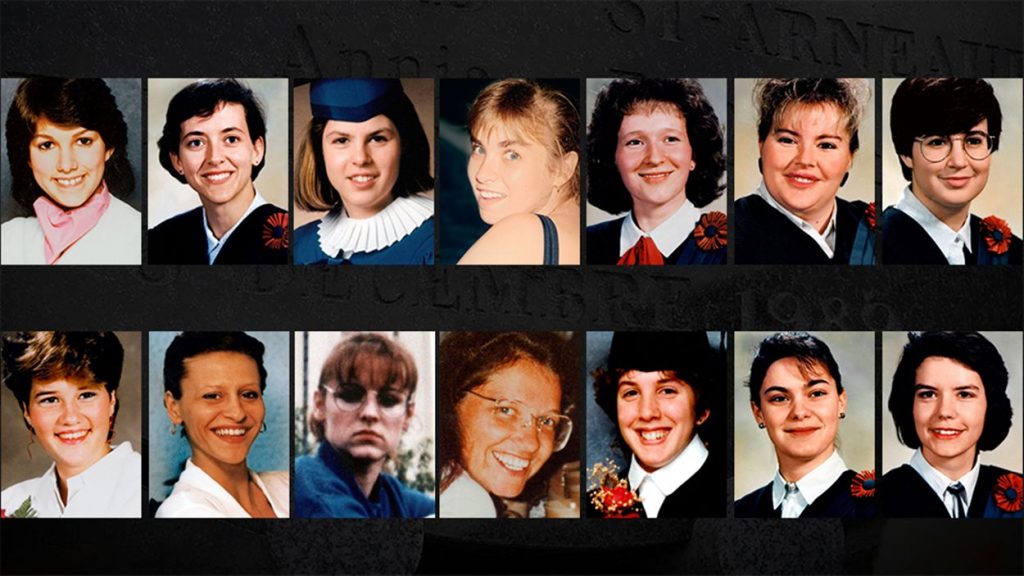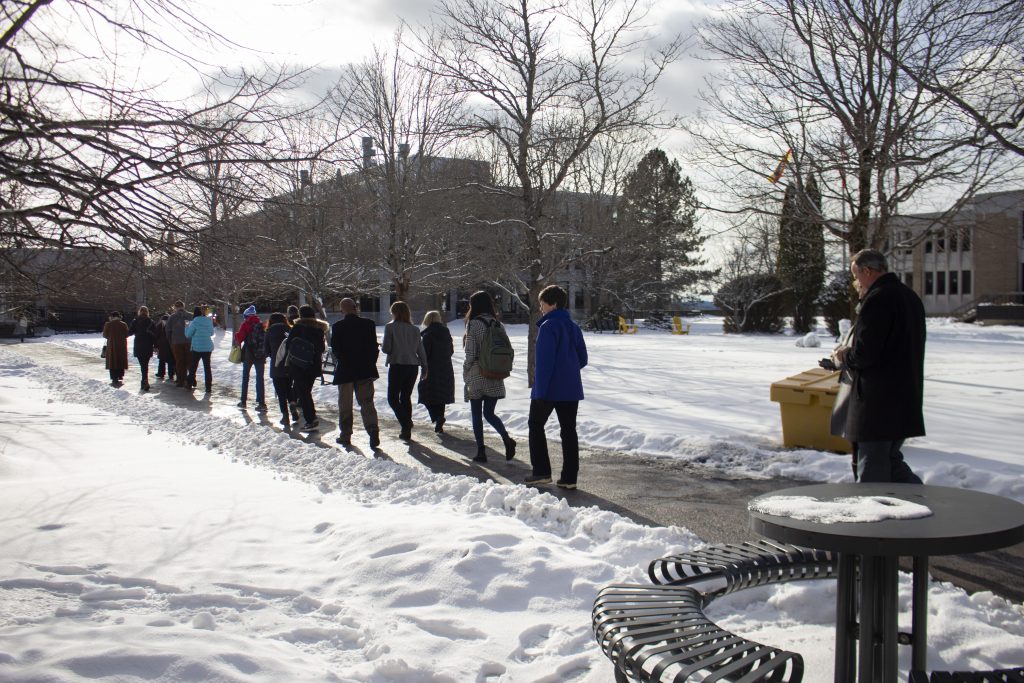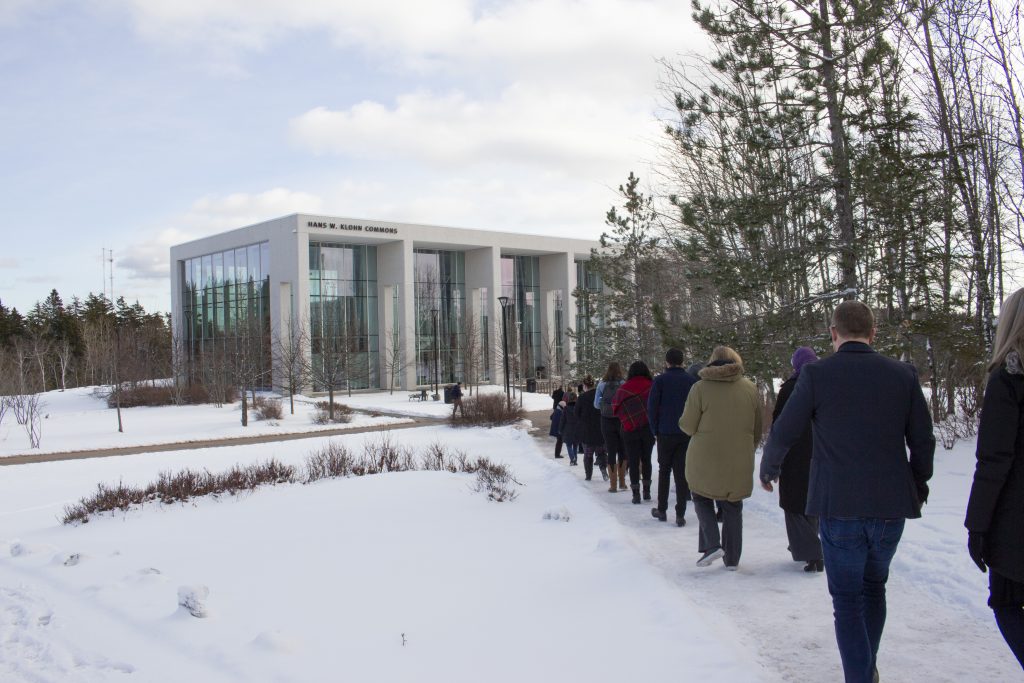Students across Canada gathered today for the National Day of Remembrance and Action on Violence Against Women, also marking the 30th anniversary of the École Polytechnique Massacre.

On December 6, 1989, an anti-feminist gunman opened fire on students, killing fourteen women before taking his own life. Most of the women who were killed were engineering students.
While there has been a positive change in the thirty years since the massacre, gender-based violence continues to be an important issue in Canada. The anniversary also brings forth a debate on gun control, as the weapon that was used is still legal.
The École Polytechnique Massacre remains the deadliest mass shooting in Canadian history. At the House of Commons, last week, Prime Minister Justin Trudeau said: “we need to do something to make sure it never happens again.”
Memorial Ceremony and Vigil
The memorial ceremony at UNB today aimed to bring awareness to the continued violence against women. The ceremony began with the reading of the names of the fourteen victims of the Montreal Massacre, and for each name that was read, roses were placed at the front of the room by students.
Chris Doran began the speeches by explaining that femicide is not a problem of the past, saying “it happens here on our doorstep, in our backyard of New Brunswick.” Continuing by explaining the Silent Witness Project, which started as a way for family, friends, and the community of intimate-partner violence victims. The life-sized wooden figures are painted red and have gold plaques on the front explaining the circumstances of the victim’s death. While the project is for remembering their loss, it is also about remembering their lives. These women were daughters, sisters, aunts, mothers and grandmothers. Doran ended his speech by explaining that today we not only remember the fourteen women who died in Montreal, but also all of the women who have died from intimate-partner violence.

Amanda Reid Rogers, AVP Indigenous Engagement for UNB, began her speech by performing a traditional smudging ceremony. She proceeded to address the radicalized and gendered violence perpetrated against indigenous women in Canada. In 2015, indigenous women made up nearly a quarter of homicide victims, indigenous women are twelve times more likely to be murdered or missing than any other woman in Canada, indigenous women are physically and sexually assaulted three times more than the non-indigenous population and are seven times more likely to be targeted by serial killers. Also acknowledging that indigenous men and boys experience colonial violence and oppression just as much as women.
Speaker Jennifer McKenzie addressed her reaction thirty years ago upon hearing the news of the massacre. At the time she was a 27-year-old engineering student and remembers feeling horror and sadness for the families of the victims. She explained that her second reaction was “that he was targeting me. If I had been there, he would have shot me.” McKenzie says that, in 1989, she identified with the victims of the massacre, but now as a middle-aged woman with a daughter, she feels more for the mothers of the victims.

Karen Ludwig spoke next, discussing the issues that continue thirty years after the massacre. While much has changed, with more women in powerful positions, she explains that we must work hard to keep women in politics. She explains that language matters, that we need to have a commonality in our language when addressing gender-based issues. Looking at violence against women today, she states that in 2018 there were 161 women killed by guns, meaning one woman or girl killed every two and a half days in Canada – roughly the same rate as in 1989.
The final speech was from Norah Siddall from the Saint John Sexual Assault Response Team (SART). Between 2017 and 2018 there was a noticeable increase in reports of sexual assaults. SART is “a community-based response, a group of volunteers and professionals who work together to provide support to individuals who have been sexually assaulted.” They provide 24/7 on-call service at the Saint John Regional Hospital and they provide free, short-term counselling to those over the age of sixteen who have been sexually assaulted.

The memorial ceremony ended with a procession to the Hans Klohn Commons where the Silent Witnesses were displayed along with a memorial table for the victims of the Montreal Massacre. Following a musical performance by Masa Kikuchi and John Lawrence, the names of the ten silent witnesses were read and a moment of silence was held to reflect on all women lost to intimate partner violence.
For more information about violence against women in New Brunswick, visit silentwitness.ca
To find out more about the Saint John Sexual Assault Response Team visit https://www.facebook.com/SJSART/


